PHOTOGRAPHY
pho·tog·ra·phy noun \fə-ˈtä-grə-fē\
: the art or process of producing images by the action of radiant energy and especially light on a sensitive surface
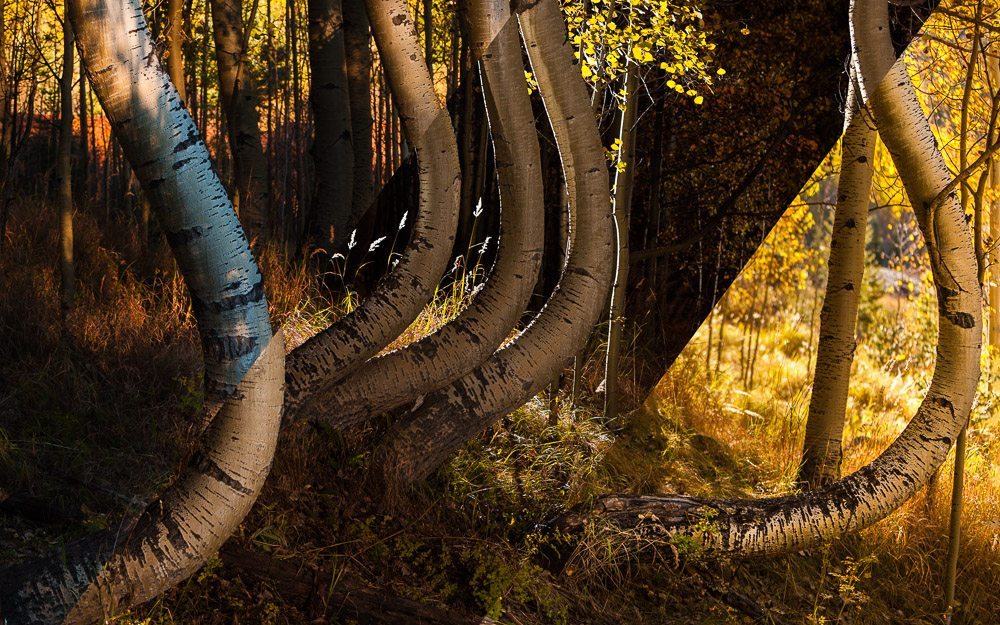
It follows that to excel in photography one must take careful notice of light, and study it adamantly. Photographs are made from two ingredients – the photographer, and the environment. The photographer is everything the artist has control of, be it his equipment, his knowledge and experience, and research. The environment are those things that we cannot control. These are the things we attempt to anticipate, and it is indeed the environment that often makes or breaks an image.
The phrase “chasing the light” has become relatively cliché within world of photography, and with good reason. If you have a perfect composition but terrible lighting, the practiced and skilled photographer will likely abstain from making an image. The light has got to be right. But how do we know when it is right? How do we know what it will do, and how the scene will react?
First of all we plan – sunrises and sunset, moonrises and moonsets, astronomical and civil twilights, wind speed and direction, fronts, pressure, weather, etc. Then we observe. And this observing can sometimes try one’s patience, as you might spend several days observing, or even YEARS observing, before the photograph presents itself with the right mix of conditions. But all of that planning and patience is what makes the photograph so special. To the photographer there is the sense of dedication, meaning, and reward in pursuing a high standard despite adversities. To the customer or observer, there is the awe inspiring quality of a photo that has been painstakingly planned and executed.
This autumn I went to a very special location, one which I have been anticipating for some time now. I could have gone and shot the location for a couple of hours until the light had gone, or until I thought I had covered every composition I could find. But this September I did that and more. I spent the night there, and when the sun had gone down I locked a composition down and experimented with creating my own light in the scene. And later when the sun came back up, I was up with it, and ready to observe what seems like a whole new location with such a drastic change in lighting conditions.
Have a look at the scene, and click through the tabs to see the effect of different lighting.
When I first arrived to the location, the sun was starting to dip down. Down below the treeline that was behind me as I photographed these aspens. That meant it was time to start shooting right away. The lovely Jhosmar set up camp while I spent the next 35 minutes making photos.
Sunset
Right as the sun dipped into the treeline, the light became scattered and dappled. At noon, through a canopy of leaves, that would be problematic. But closer to sunset, that dappled light is already relatively diffused and soft; we can work with it. The light changed significantly with every minute, which helps to give a sense of urgency to the situation.
Dusk
The dusk image was shot right at the end of my batch of sunset images. The major defining factor here, and the reason I separate this as “dusk”, is that the sun had reached such a low point that it was hardly illuminating the trees with any direct light. The light was so diffused and soft, and the direct light that had illuminated some sections of the background was also gone. Within a span of minutes the scene changed drastically. Shadows opened, highlights were tamed, and the palette of color became more subdued. I like it!
Night
With the onset of dusk and dropping temperatures I retreated to the nearby campsite that was so lovingly set up for me. We built a strong, warm fire and filled the ring with coals. This made it all that much more difficult to get up and leave to photograph the scene at night. But I was curious – how could I light the scene in a meaningful way with artificial light? I had 4 speedlight flashes at my disposal, and the knowledge that I could combine exposures later in post processing. I set up a flash with a diffuser as a low level fill to illuminate the aspens from the front, and then went about setting up more and more speedlights to give more interest to the scene. One speedlight at camera left with no diffusion to give some harder highlights to the trees, one directly behind the aspens to give some striking backlighting, and several back in the woods to illuminate the foliage and give depth to the image. I also captured a single purely moonlit exposure to provide a tiny bit of detail in some shadowy areas. The setup was tricky, and required a lot of trial and error, but in the end I was pleased to have something that I know would be my own, never to be exactly repeated.
Morning
At sunup I awoke and cooked breakfast, eyeing the sunlight that was creeping into the sky behind a mountain ridge. As soon as that sun broke over the ridge and started to hit my section of the valley floor I headed out to the same spot from the previous day at a quick pace. The scene had changed completely. The sun was backlighting the golden aspen leaves to create brilliant yellows – the yellows that I had envisioned would be in the scene. I shot directly into the sun, which was tricky as I had to use tree trunks to block the actual sun from the lens. That creates an interesting puzzle when finding compositions. The sun was still low enough in the sky that the dynamic range was still within the capabilities of my camera, and I was able to bring shadow and highlights back in post processing to yield the image I saw with my eyes.
In addition to the images above, I’ll share some other compositions that I particularly liked:
I hope you enjoyed this brief study of light in a truly unique location. In the future I plan to also post about post-processing techniques used in some of these images. Until then, have a look at this previous post about shooting fall color, if you haven’t already…

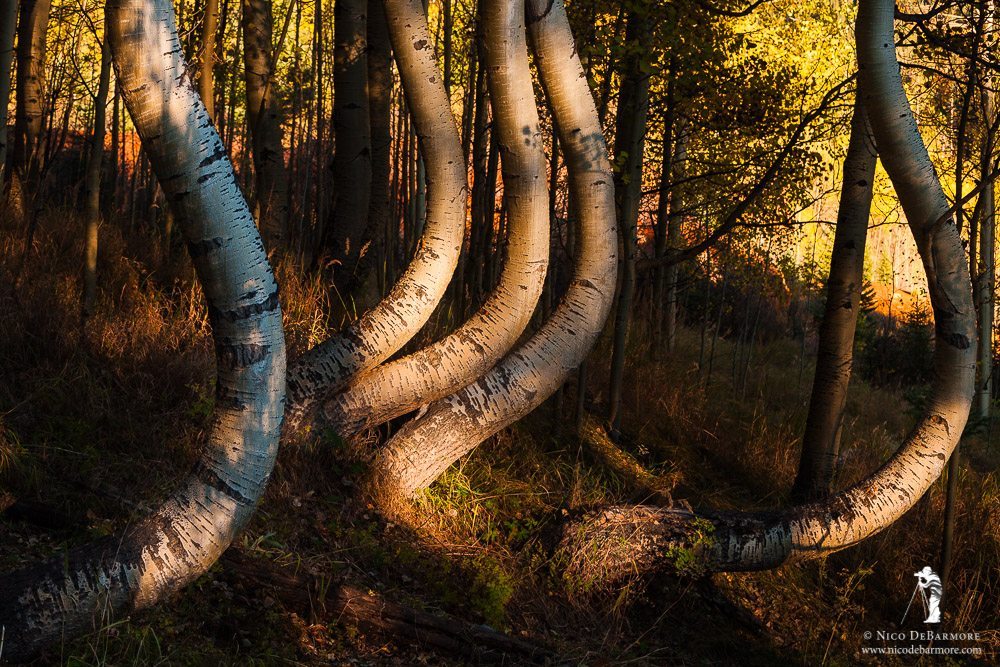
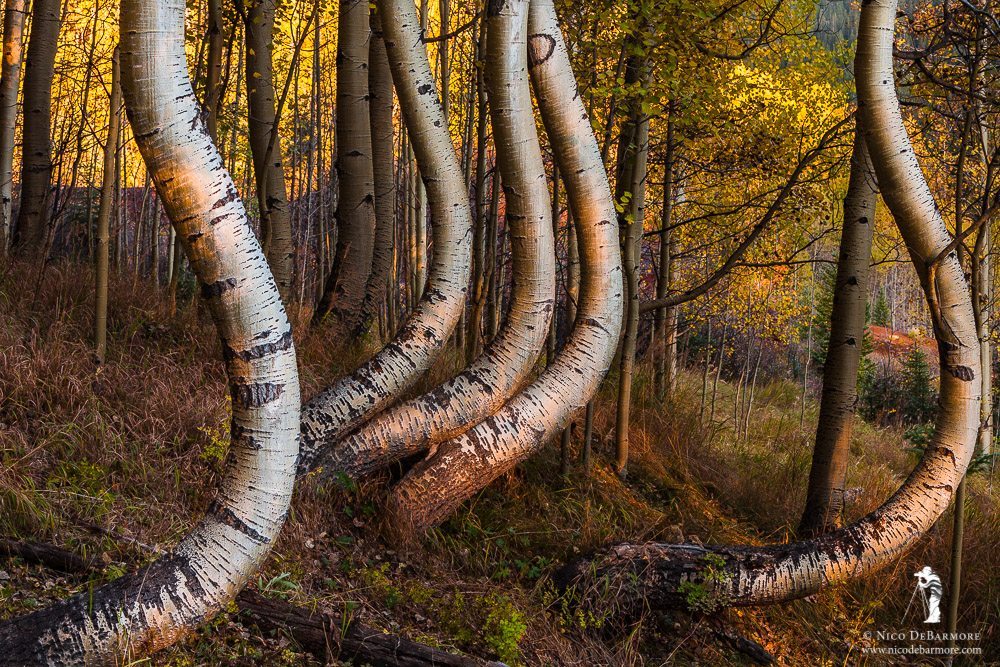
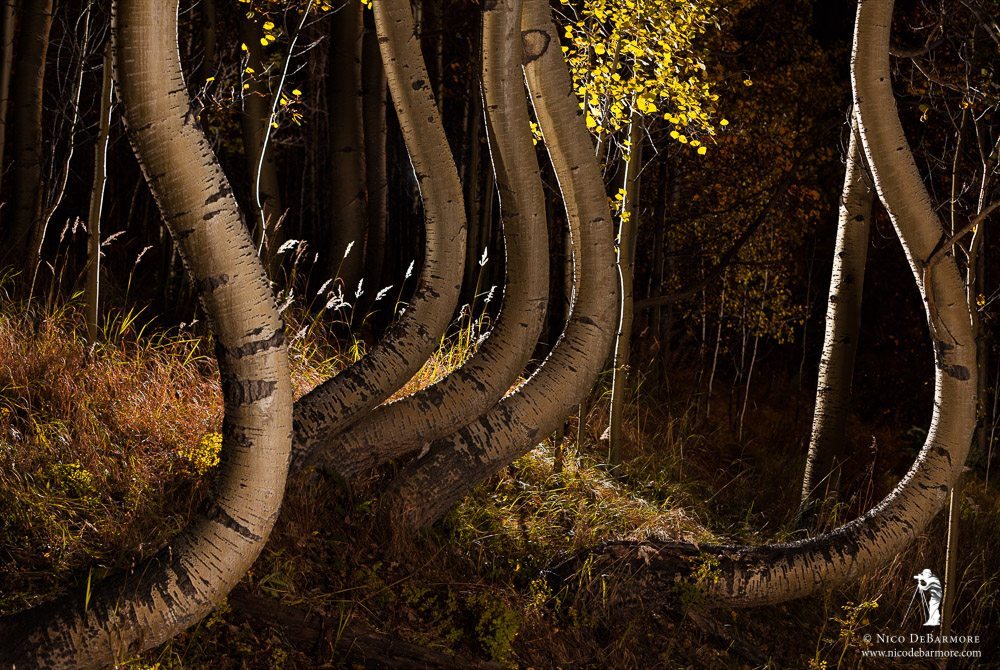
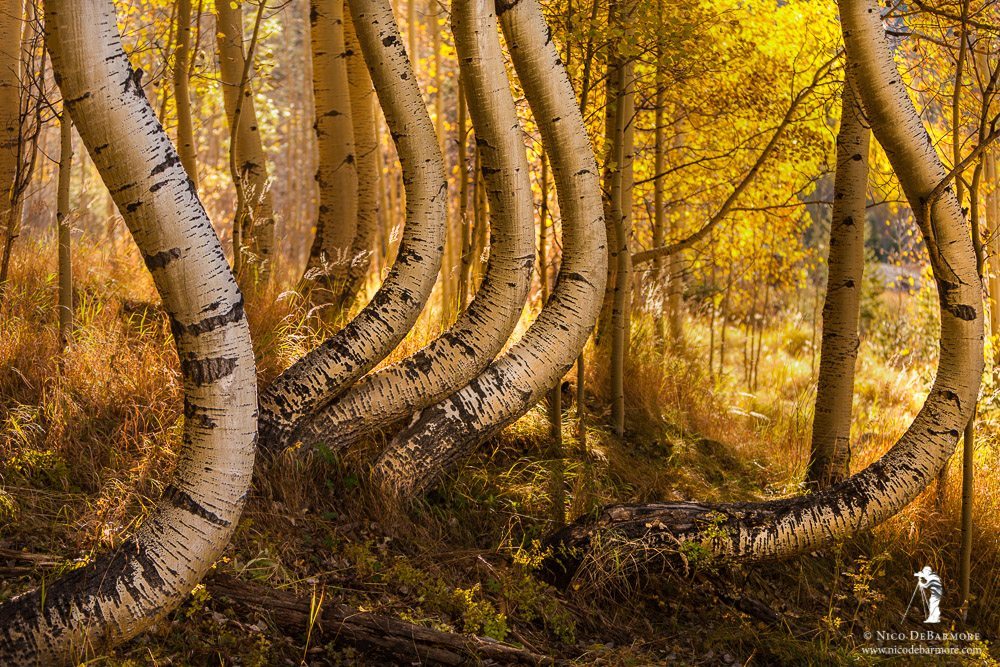
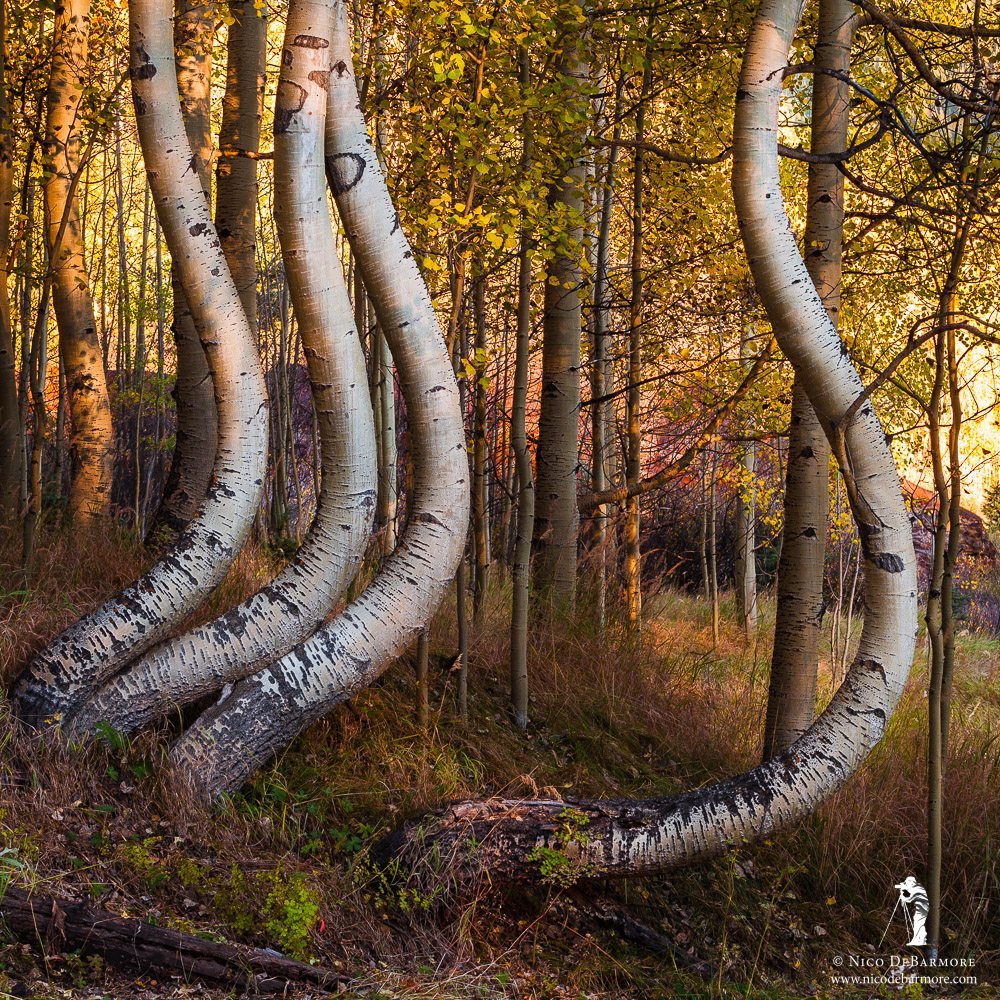
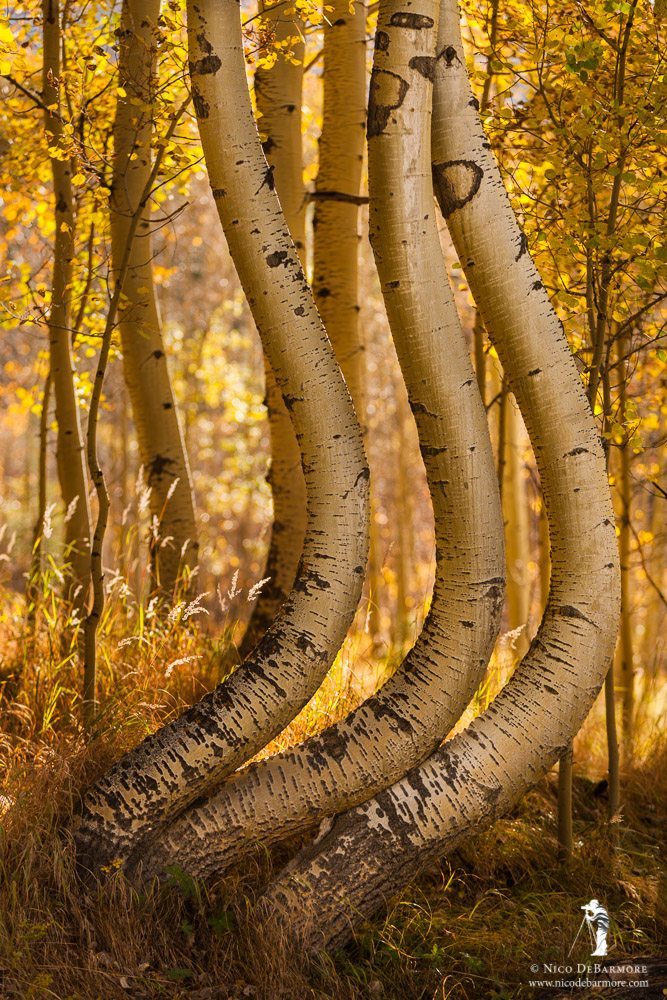
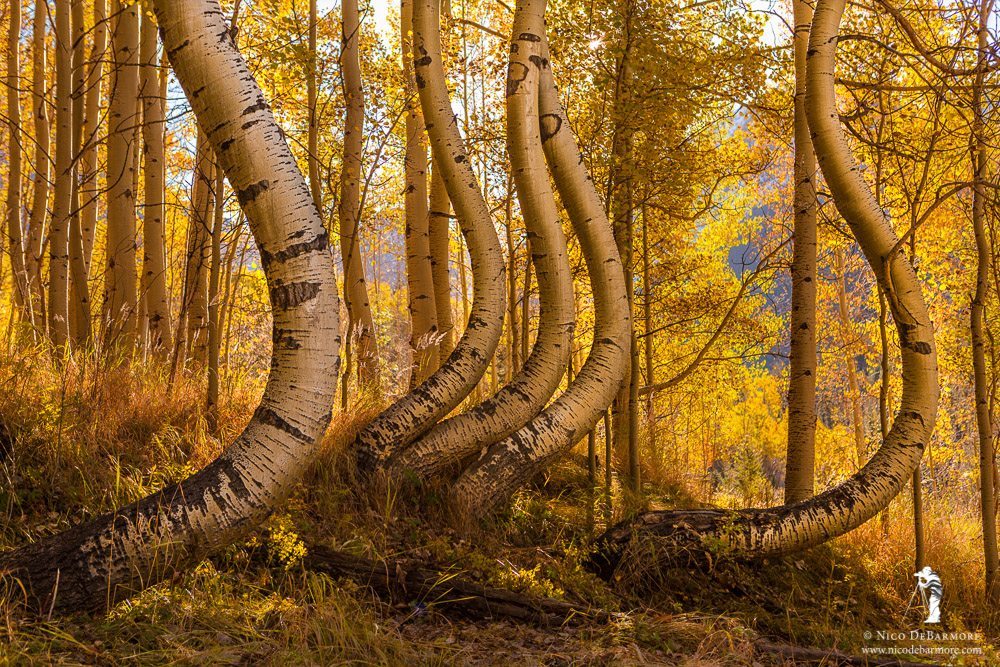
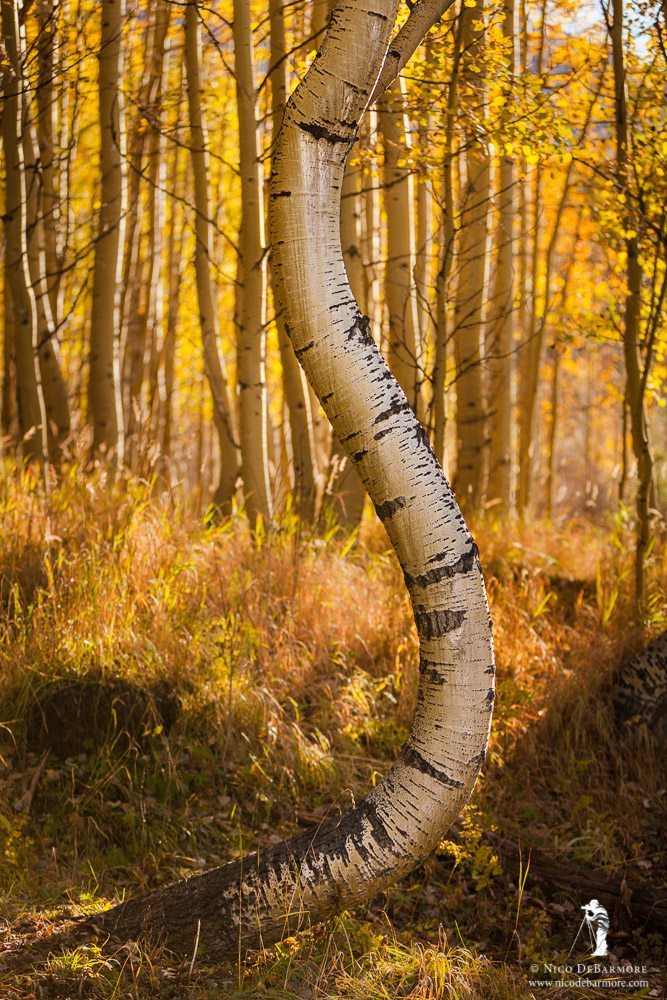
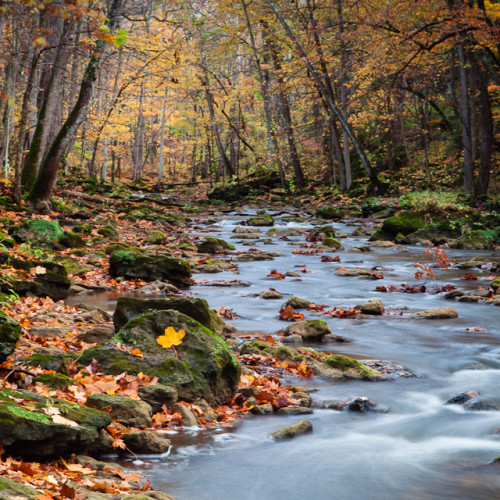
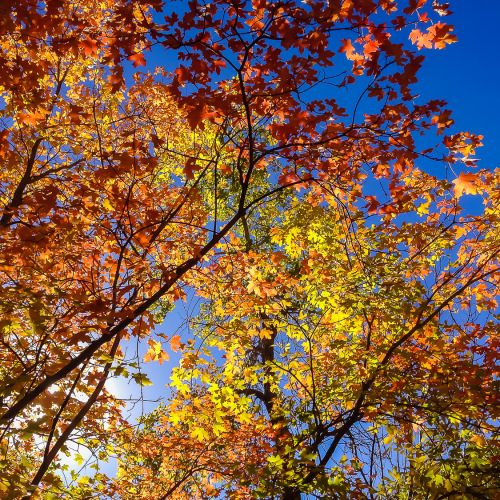
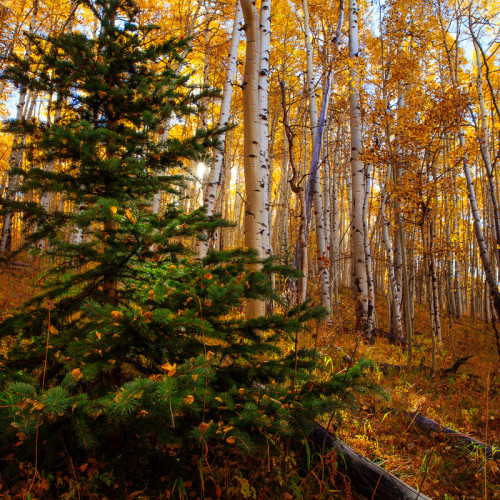
Leave a reply